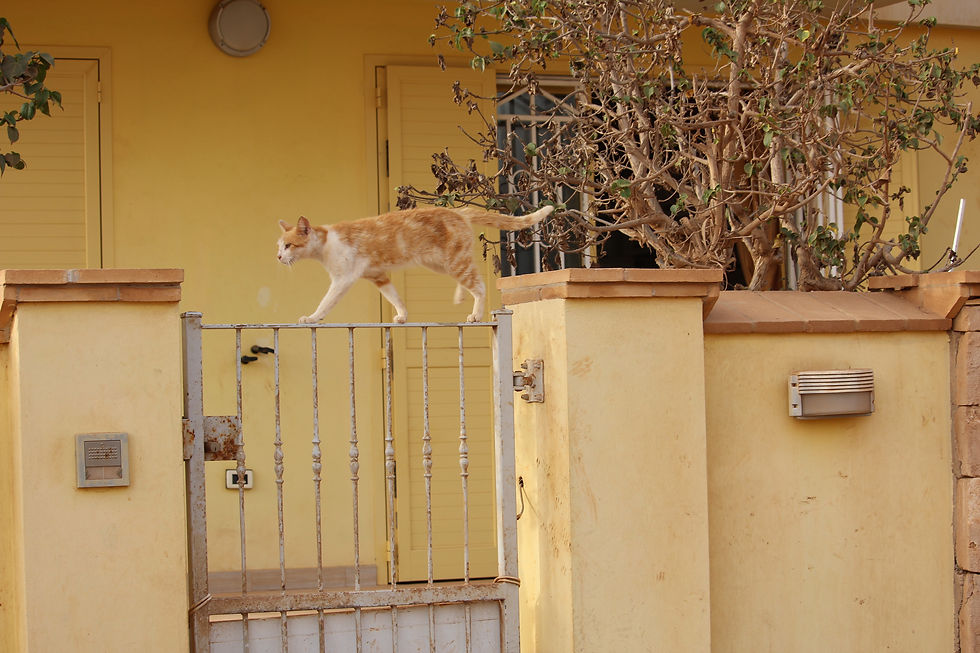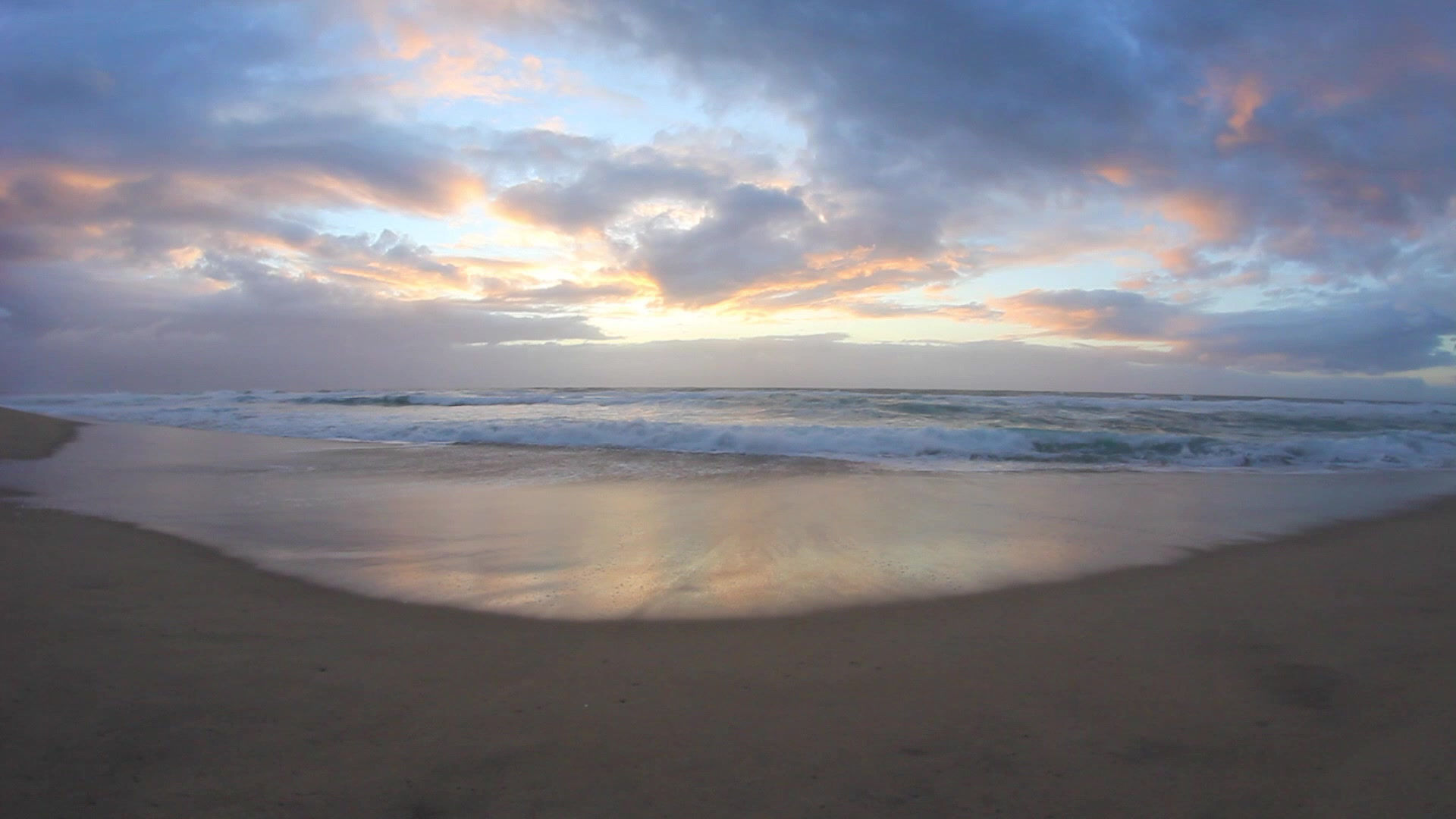Gli animali di Santa Maria, Ilha do Sal
- servicesantamaria
- 15 minuti fa
- Tempo di lettura: 5 min
Molti turisti, quando arrivano sull’isola di Sal si rallegrano di trovare molti animali liberi, delicatamente affabili, nelle strade e ai bordi delle spiagge.
Si può percorrere Santa Maria a piedi e incrociare almeno 15 gatti, alcuni sui muretti delle case, altri a bighellonare nei posti meno frequentati dagli umani. I cani, invece, sono più socievoli, dormono all’ombra e si svegliano (quando ne hanno voglia) al passaggio di qualcuno. Hanno gli occhi espressivi e fanno subito capire che una coccola è ben gradita.

E’ facile fare amicizia, così come è semplice che l’animale colga nella nostra disponibilità una sorta di richiamo a seguirci, a rimanerci accanto. Molti dei cani randagi sono stati abbandonati o sono frutto di accoppiamenti non controllati e la gran parte è in cerca di qualcuno con cui condividere la vita.

La concezione europea del “possesso” di un animale da compagnia a Capo Verde è concettualizzata in modo molto più semplice. Ogni proprietario ha l’obbligo di identificare il proprio animale, anche se molte volte questo non avviene, ma la sua educazione, il suo sviluppo psicologico è del tutto lasciato al caso. Sono cani che hanno un collare, o alla peggio un laccio sfilacciato attorno al collo, vagano sapendo perfettamente dove sono di casa, senza un padrone a vista, liberi di girovagare e incontrare altri cani senza restrizioni.

La mentalità “nordica” porrebbe come dubbio il fatto che gli animali potrebbero attaccarsi, ferirsi, generare lotte di branco. Tutto questo non avviene, se non in maniera sporadica, perchè esistono gerarchie e limitazioni di spazio regolarmente puntualizzate dagli stessi cani.
Se incontrare i cani per strada è semplice, per quanto riguarda i gatti lo è ancora di più perchè se possono sono loro a venire a cercarci. Scavalcano balaustre, balconi, inferriate, salgono fin sui tetti e soprattutto curiosano in casa. Più di una volta mi è capitato di lasciare una finestra aperta e di scoprire che “qualcuno” si è intrufolato senza il mio permesso. Tutto ciò è affascinante, tenero, commovente.

Il rovescio della medaglia è quando l’animale, dopo una settimana o poco più di carezze, coccole e attenzioni, oltre al cibo in abbondanza, alla partenza del turista si ritrova nuovamente solo. Di più, abbandonato un’altra volta. E questo si ripete ciclicamente, più o meno spesso a seconda dell’aflusso turistico.
Certo è difficile negare un avanzo a un cane affamato o una poltrona sul balcone e due croccantini al gatto girovago, ma le conseguenze sono spesso peggiori della cortesia.
Sal è un isola, nemmeno troppo grande, e la quantità di animali senza un appoggio umano ha un tetto definito, per questo motivo nei decenni scorsi sono stati perpetrati atti barbarici di abbattimento e di “esportazione”.
Negli ultimi quindici anni, grazie anche ad associazioni di volontariato e a donazioni private, sono state sostenute campagne di educazione, prevenzione e sterilizzazione.
I gatti sono facilmente riconoscibili se operati perchè hanno una piccola asportazione sulla membrana di un orecchio, così da distinguerli dalle nuove generazioni.

La più importante a Sal è certamente l’OSPA che ha sede poco fuori Santa Maria sulla strada che porta a Espargos, avvisando è possibile visitare la struttura, si occupa anche della cura e il recupero di alcuni cuccioli, oltre a ospitare tutti i cani salvati (nel limite dello spazio) da una sicura permanenza al canile statale, in condizioni pietose.

Invito tutti a riflettere. Quanto avresti speso per due pacchi di croccantini e una ciotola per l’acqua? 10 euro? Quegli stessi soldi se donati ad una associazione potrebbero essere utili per molti più animali ed efficaci anche per il loro benessere. Coccoliamo i randagi, offriamo loro da bere, ma non abituiamoli a noi se non siamo davvero sicuri di potercene prendere cura senza una scadenza. Gli animali non sono giocattoli ma esseri senzienti.
----------
English Version
Many tourists, upon arriving on the island of Sal, are delighted to find many free-roaming animals—gently friendly—on the streets and at the edges of the beaches.
You can walk through Santa Maria and come across at least 15 cats: some perched on house walls, others wandering through quieter spots less frequented by humans. Dogs, on the other hand, are more sociable. They sleep in the shade and wake up (when they feel like it) as people pass by. They have expressive eyes and immediately make it clear that they would love a bit of affection.
It’s easy to make friends, just as it’s easy for the animal to perceive in our openness a sort of invitation to follow us, to stay by our side. Many of the stray dogs have been abandoned or are the result of uncontrolled breeding, and most of them are simply looking for someone to share their life with.
The European concept of “owning” a pet is conceptualized in a much simpler way in Cape Verde. Every owner is required to identify their animal, although often this doesn’t happen, but their upbringing and psychological development are left entirely to chance. These are dogs that might wear a collar—or at best a frayed string around their neck—and they roam around knowing perfectly well where their home is, without a visible owner, free to wander and meet other dogs without restrictions.
The “northern” mindset might question whether the animals could fight, injure each other, or form aggressive packs. This hardly ever happens, because there are natural hierarchies and territorial boundaries that are regularly maintained by the dogs themselves.
If encountering dogs on the street is easy, spotting cats is even easier—because if they can, they’ll come looking for us. They climb over railings, balconies, fences, even onto rooftops, and they especially like to snoop inside houses. More than once, I’ve left a window open only to find that “someone” snuck in without my permission. It’s fascinating, sweet, and touching.
The flip side is when, after a week or so of pets, cuddles, attention, and more than enough food, the tourist departs—and the animal is left alone again. Worse, abandoned once more. And this happens in cycles, more or less often depending on the tourist flow.
Of course, it’s hard to refuse scraps to a hungry dog or a seat on the balcony and a few kibble pieces to a roaming cat, but the consequences are often worse than the kind gesture.
Sal is an island—not even a very big one—and the number of animals without human support has a natural limit. For this reason, in past decades, there were barbaric acts of culling and “exportation.”
In the past fifteen years, thanks also to volunteer organizations and private donations, there have been ongoing efforts in education, prevention, and sterilization.
Cats that have been operated on are easily recognizable by a small notch on the membrane of one ear, allowing them to be distinguished from new generations.
The most important organization on Sal is undoubtedly OSPA, located just outside Santa Maria on the road to Espargos. With notice, it’s possible to visit the facility. They also care for and rehabilitate some puppies, as well as house as many rescued dogs as they can (within the limits of space), saving them from a miserable existence in the state kennel.
I invite everyone to reflect: how much would you spend on two packs of kibble and a water bowl? 10 euros? That same amount, if donated to an association, could benefit many more animals and be far more effective for their well-being.
Let’s cuddle the strays, offer them water, but let’s not get them used to us if we’re not truly sure we can take care of them without a time limit. Animals are not toys—they are sentient beings.

Comments